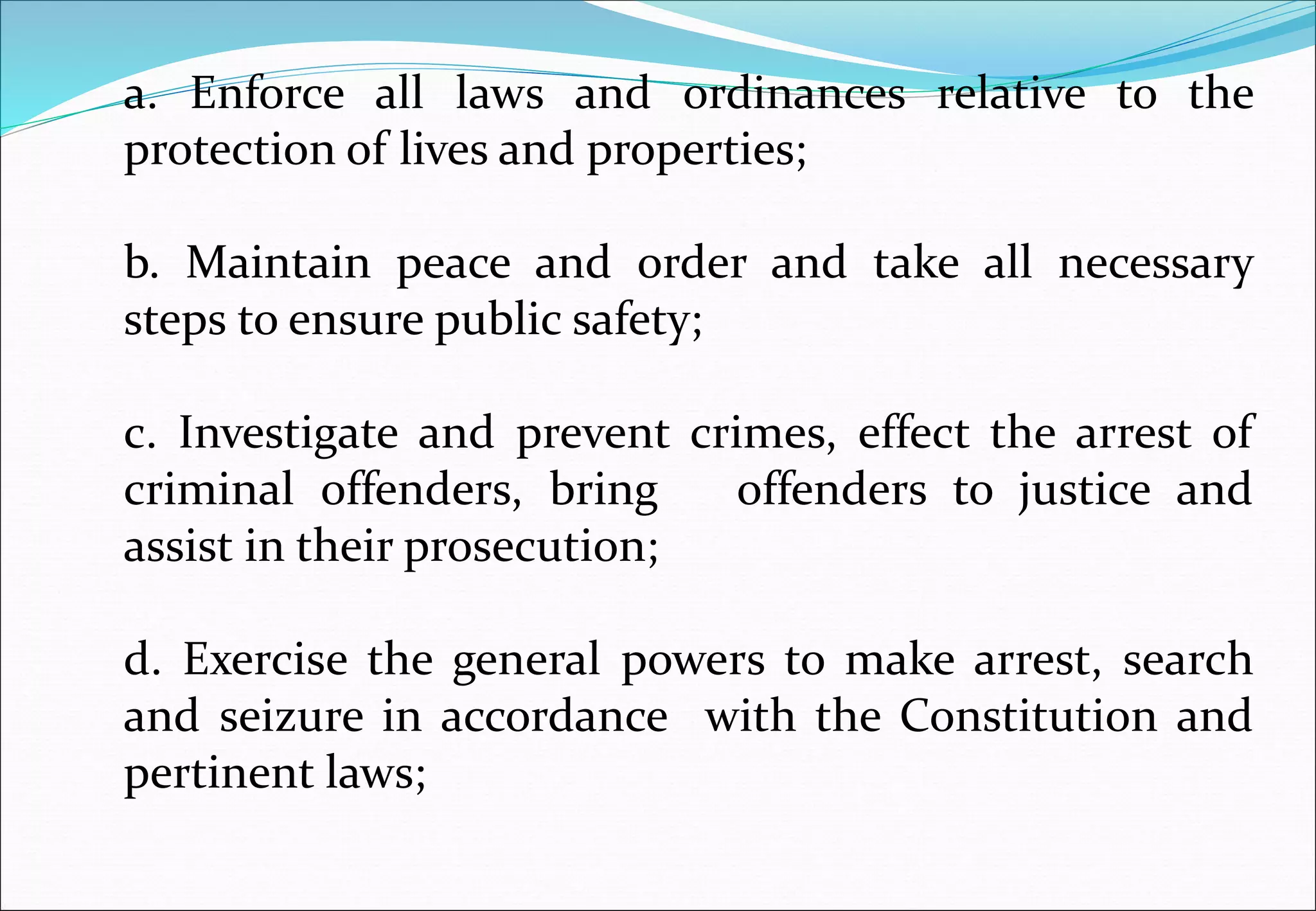The document outlines the structure and functioning of the Philippine Criminal Justice System, detailing its five pillars: law enforcement, prosecution, courts, corrections, and community. It highlights the roles of key agencies like the Philippine National Police and the National Bureau of Investigation, and emphasizes the importance of coordination among the pillars for effective justice delivery. Additionally, it discusses various challenges faced within the system, such as corruption and inefficiency among law enforcement and prosecutorial entities.

































